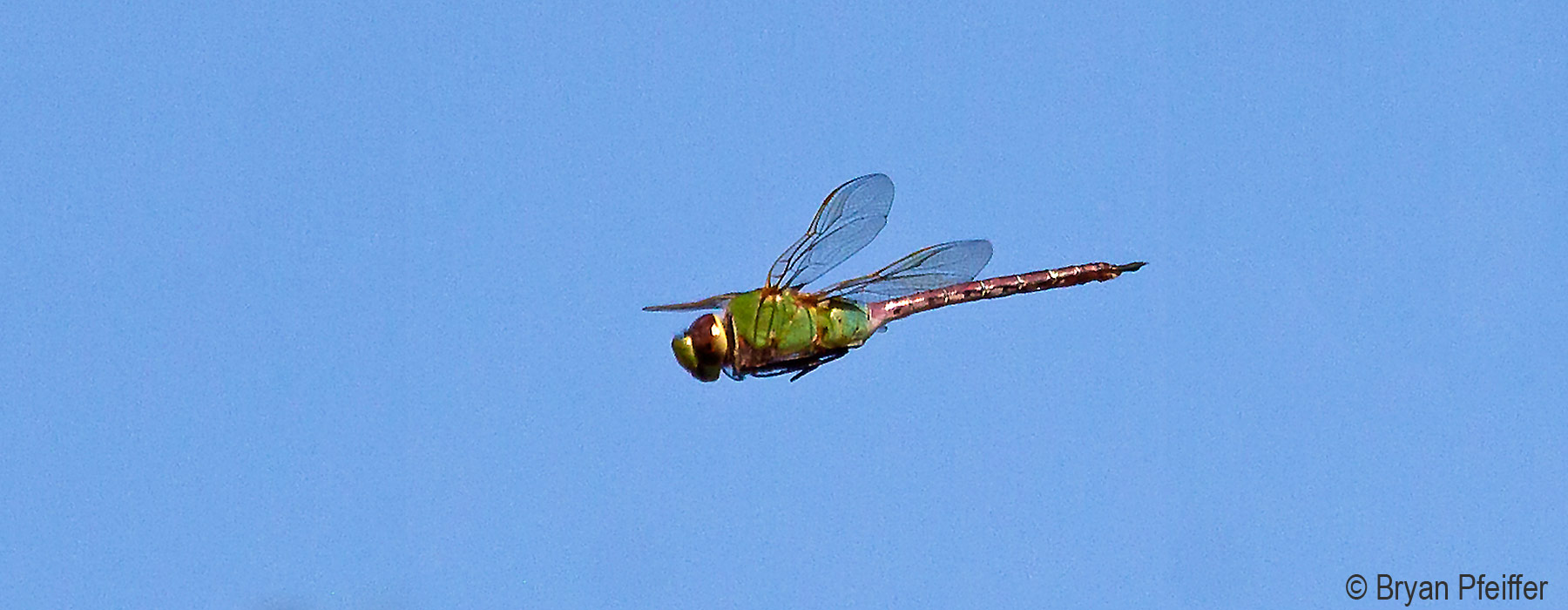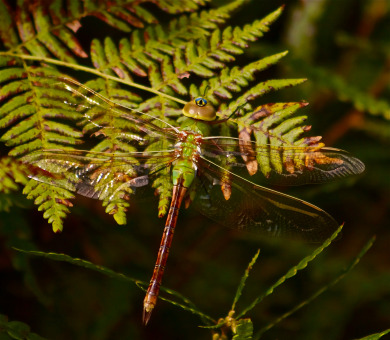Dragonfly migration has been observed on every continent except Antarctica, with some species performing spectacular long-distance mass movements. Like birds, millions of Green Darners migrate to the north in the spring and south in the fall. Where are they coming from and where do they go?
Our scientists are hot on the trail of discovery. They've teamed up with the Migratory Dragonfly Partnership, a group of biologists from across the continent, to better understand dragonfly migration. VCE, along with the Smithsonian Conservation Biology Institute, is leading a groundbreaking study using trace elements found in dragonfly wings to trace spring migrants back to their natal origins.
The overarching goal of this study is to understand the geographic scale and connectivity of dragonfly migration. Remarkably, we can do this by examining the chemistry locked in dragonfly wings. Stable hydrogen isotopes are ideal to infer natal origins of dragonflies because they reflect the latitude at which body tissues were grown and are chemically inert once bound. Vaporizing a segment of wing in a mass spectrometer provides the chemical “signature” we need to determine latitude of the natal pond where a given dragonfly emerged. With the help of field volunteers and existing museum collections, we are sampling Common Green Darners from Mexico to Texas, across to Florida, and up the eastern half of North America into Canada. We hope our findings will shed important light on one of North America’s most impressive animal migrations.


